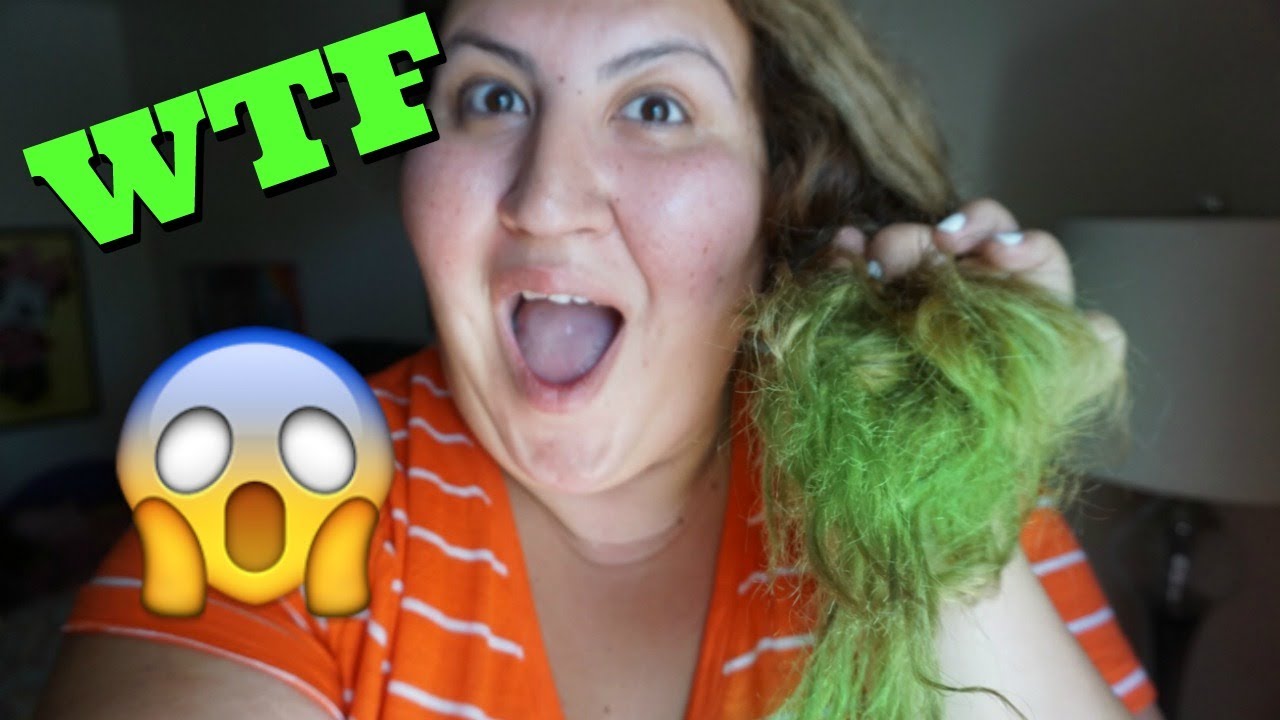When it comes to hair care, one of the most pressing concerns for individuals with bleached hair is whether or not they can take a dip in a chlorine pool. Bleached hair often receives a bad reputation for being fragile and susceptible to various environmental factors. Chlorine, a common chemical found in swimming pools, may appear harmless; however, it harbors the potential to wreak havoc on the delicate structure of bleached hair. The topic warrants a thorough exploration, as understanding the effects of chlorine on bleached hair can empower individuals to make informed choices.
First and foremost, it’s essential to grasp what bleaching does to hair. The bleaching process involves stripping the hair of its natural pigment, usually through the use of harsh chemicals. This process ultimately alters the hair’s intrinsic structure, making it more porous and prone to damage. In the world of hair care, this is a crucial detail. While bleached hair can be stunning, it may also become dry, brittle, and more susceptible to external aggressors—especially chlorine.
Now, let’s delve into the chemistry of chlorine itself. Chlorine serves as a disinfectant in pools, effectively eliminating harmful bacteria and keeping the water clean. However, it can also have adverse effects on those with bleached hair due to its oxidizing properties. When chlorine interacts with bleached strands, it can react with residual minerals and proteins present in the hair, leading to an unsightly greenish hue. This phenomenon is sometimes referred to as “swimmer’s hair.”
But why does this occur? The answer lies in the chemical reactions that transpires between chlorine and the elements present in the hair. When bleached hair is exposed to chlorine, the bleach can cause a breakdown of the hair’s natural pigment, causing the traditional yellow undertones of bleached hair to oxidize. As a result, the hair may take on green shades, particularly if the swimming pool contains copper or other metals that can react with the chlorine.
Moreover, swimming in chlorinated water can lead to additional concerns for bleached hair. Frequent exposure can strip away what little moisture is left in the already dehydrated strands, resulting in an exacerbation of split ends, frizz, and general damage. It is vital to consider these factors when planning regular swimming sessions. The question that follows, then, is: how can one mitigate these adverse effects?
Prevention is crucial. One effective strategy is to rinse the hair thoroughly before entering the pool. Wet hair tends to be less absorbent, meaning it can limit the amount of chlorine absorbed during your swim. Consider treating your hair with a protective leave-in conditioner or a specialized pre-swim product designed to coat the hair and provide an extra layer of defense against chlorine. These products often contain beneficial oils and humectants that can help lock in moisture and protect the hair from damaging agents.
For individuals who swim regularly, investing in a quality swim cap can act as a formidable barrier against chlorine exposure. While it may not be the most stylish accessory, a swim cap can considerably reduce the amount of water that comes into contact with your hair. After swimming, it’s essential to follow a dedicated hair care routine to restore moisture. Think of it as an opportunity to pamper your hair.
The post-swim routine should include a gentle clarifying shampoo to cleanse the hair of any chlorine residue. However, avoid overusing such shampoos, as they can be drying when employed too frequently. Follow up with a deeply moisturizing conditioner or a hydrating hair mask designed specifically for color-treated or bleached hair. This step is instrumental in replenishing lost moisture and rebuilding the hair’s protective barrier.
For a luxurious treatment, consider ingredients that contain keratin, argan oil, or shea butter. These elements are known for their nourishing properties, allowing for enhanced moisture retention and overall hair health. Additionally, leave-in treatments and serums designed for color-treated hair can be beneficial for maintaining vibrancy and shine post-swim.
Certain techniques can also ascertain that bleached hair remains vibrant. For example, some hairstylists recommend incorporating purple shampoos to neutralize unwanted yellow or green tones that may arise after swimming. These shampoos work effectively by depositing a purple pigment that counteracts brassiness, thus helping to maintain the overall aesthetic of the bleached hair.
Ultimately, it’s crucial to recognize that while swimming in chlorinated water isn’t off-limits for individuals with bleached hair, being proactive is key. Taking preventive measures, employing post-swim care, and understanding the chemistry involved can significantly improve the ability to enjoy a swim without detrimental effects on your precious locks.
In conclusion, while bleached hair is more vulnerable to the effects of chlorine, it doesn’t have to be an all-or-nothing situation. A little knowledge combined with effective hair care strategies can allow individuals to enjoy swimming without sacrificing the health and appearance of their hair. Embrace the splashes and sun-soaked days by adopting a comprehensive approach to hair care that caters specifically to the needs of bleached hair. Remember, the key is to balance enjoyment with preservation, ensuring your hair looks as radiant as ever, come swim season or not.
